Perched high on a hill overlooking the quaint town of Gjirokastra in southern Albania, Gjirokastra Castle stands as a majestic testament to the country’s rich history and cultural heritage. Known as the “City of Stone,” Gjirokastra is a UNESCO World Heritage Site, and its castle is one of the most significant medieval fortresses in the Balkans. This article delves into the fascinating history, architectural splendor, and cultural significance of Gjirokastra Castle, offering a comprehensive guide for anyone interested in exploring this Albanian gem.
A Brief History of Gjirokastra Castle
Gjirokastra Castle’s history is as old as the town itself, with roots tracing back to the 12th century. Originally a small fortress, it was expanded and fortified over the centuries, particularly during the Ottoman era. The castle served as a stronghold for various rulers, including the Byzantine and Ottoman empires, reflecting the region’s strategic importance.
Under Ali Pasha of Tepelena, a prominent Ottoman ruler in the early 19th century, the castle underwent significant renovations. Ali Pasha transformed it into a formidable fortress, adding new defensive walls, towers, and a prison. Today, the castle stands as a symbol of Albania’s turbulent past, having witnessed centuries of warfare, political intrigue, and cultural evolution.
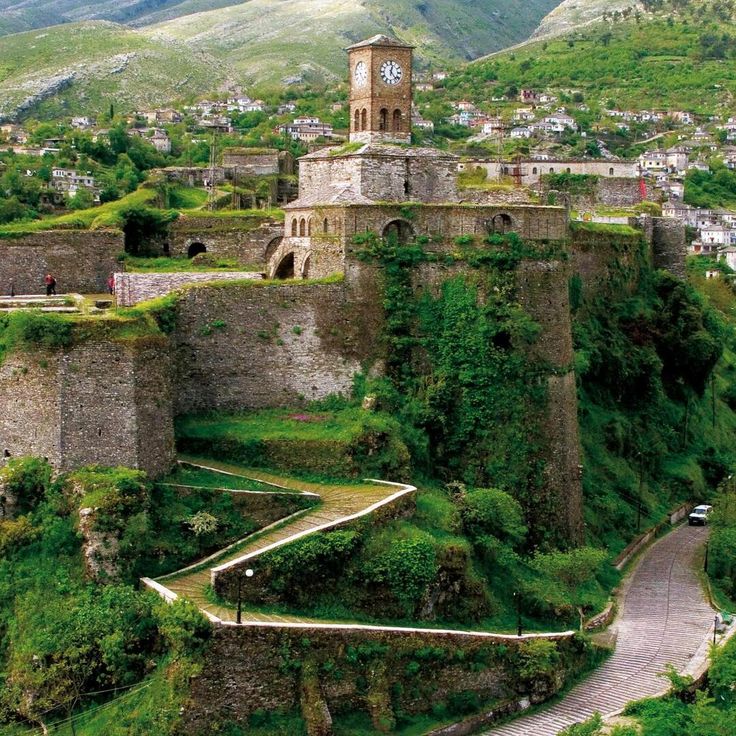
Architectural Highlights of Gjirokastra Castle
One of the most striking features of Gjirokastra Castle is its blend of Byzantine and Ottoman architecture, a reflection of the region’s diverse cultural influences. The castle’s massive stone walls, some up to 3 meters thick, are a marvel of medieval engineering, designed to withstand sieges and attacks.
The Clock Tower, one of the castle’s most iconic landmarks, offers panoramic views of Gjirokastra and the surrounding Drino Valley. Another architectural highlight is the castle’s aqueduct, built to supply water to the fortress during times of siege. This ancient structure, though partially in ruins, remains a testament to the ingenuity of its builders. Learn about the Architectures of Red Fort.
The castle also houses a collection of artillery, including cannons from various periods, displayed along the ramparts. These remnants of Gjirokastra’s military past provide a glimpse into the fortress’s role in defending the town and the broader region.
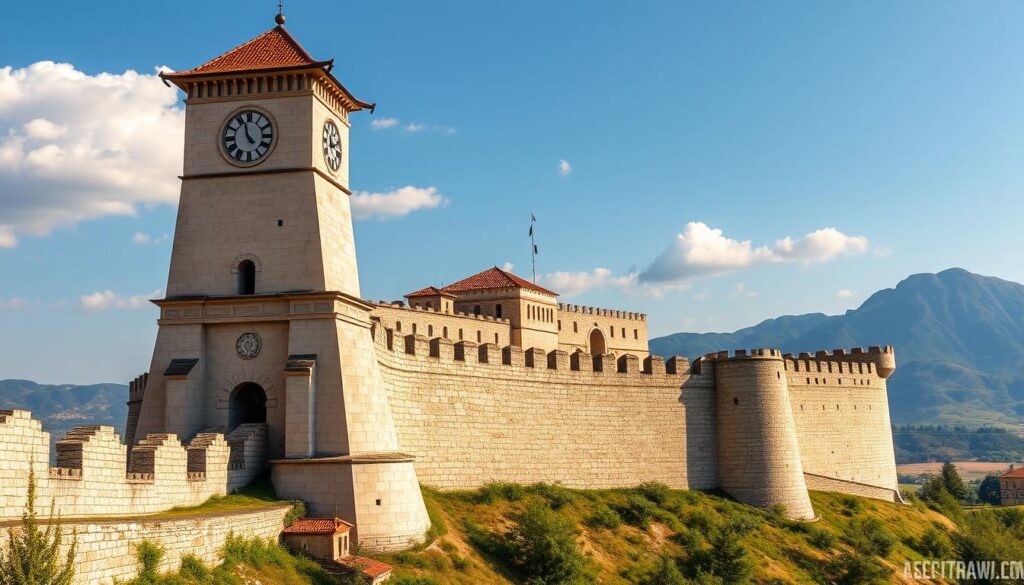
The Castle Museum: A Journey Through Albanian History
Gjirokastra Castle is not just an architectural wonder; it is also home to a fascinating museum that takes visitors on a journey through Albania’s rich history. The museum, located in the former prison quarters, features exhibits on the country’s military history, including weapons, uniforms, and photographs from the early 20th century.
One of the most intriguing exhibits is the collection of World War II artifacts, which includes an Italian fighter plane that crash-landed near Gjirokastra. The museum also explores the castle’s role as a prison during the communist era, offering insights into Albania’s political history and the struggles of those who opposed the regime. Learn about The Statue of Liberty in Paris.
Visitors to the museum can also learn about the folklore and legends associated with Gjirokastra Castle, adding a layer of mystique to this already captivating site.
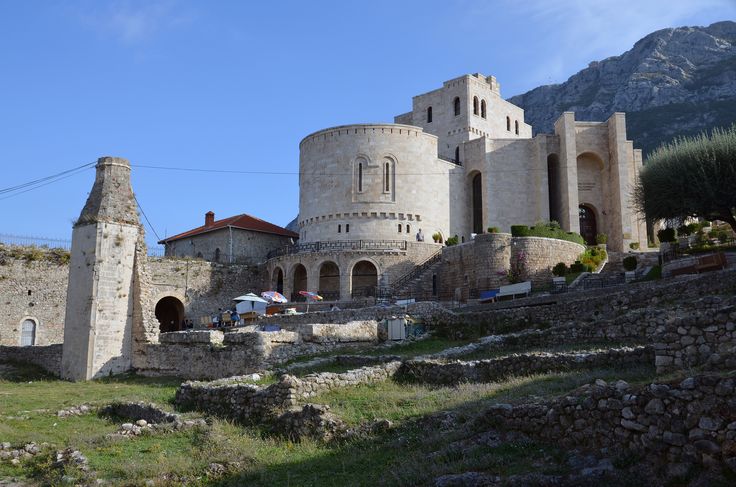
Legends and Stories Surrounding Gjirokastra Castle
Gjirokastra Castle is steeped in legends, many of which have been passed down through generations. One of the most famous tales is that of Princess Argjiro, a noblewoman who allegedly threw herself and her child from the castle’s highest tower to avoid capture by invaders. Her sacrifice is said to have given the town its name, with “Gjirokastra” meaning “Castle of Argjiro.”
Another popular legend involves the ghost of a former prisoner who is said to haunt the castle’s dungeons. This tale, like many others, adds to the castle’s allure, drawing visitors intrigued by the mysterious and the macabre.
Practical Guide: Visiting Gjirokastra Castle
For those planning to visit Gjirokastra Castle, here’s a practical guide to help you make the most of your trip:
- Location: The castle is located in the heart of Gjirokastra, easily accessible on foot from the town center.
- Opening Hours: Gjirokastra Castle is open daily from 9:00 AM to 7:00 PM during the summer months, and from 9:00 AM to 5:00 PM in the winter.
- Admission Fee: A small fee is required for entry, which includes access to the castle, museum, and exhibitions.
- Guided Tours: Guided tours are available in multiple languages, offering a deeper understanding of the castle’s history and significance.
- Best Time to Visit: Spring and autumn are the best times to visit, as the weather is mild and the crowds are smaller.
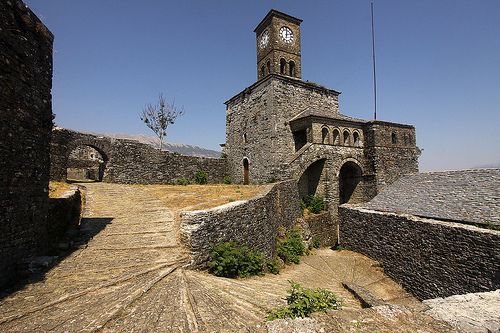
Events and Festivals at Gjirokastra’s Castle
Gjirokastra Castle is not just a historical site; it’s also a vibrant cultural hub. The castle hosts several events and festivals throughout the year, including the National Folk Festival, which celebrates Albania’s rich musical and dance traditions. This event, held every five years, attracts performers from across the country and is a highlight for both locals and tourists. Explore the Beauty of Humayun Tomb.
Another popular event is the Gjirokastra Castle Music Festival, which features performances by local and international artists in the stunning setting of the castle’s courtyard. These events offer visitors a unique opportunity to experience Albanian culture and traditions in one of the country’s most historic settings.
Conclusion
Gjirokastra Castle is more than just a fortress; it’s a symbol of Albania’s enduring spirit and rich cultural heritage. Whether you’re a history buff, an architecture enthusiast, or simply a traveler looking to explore new places, Gjirokastra Castle offers something for everyone. With its fascinating history, stunning architecture, and vibrant cultural scene, this majestic fortress is a must-visit destination in the Balkans.
One Reply to “Gjirokastra Castle Albania’s Majestic Fortress”
Comments are closed.

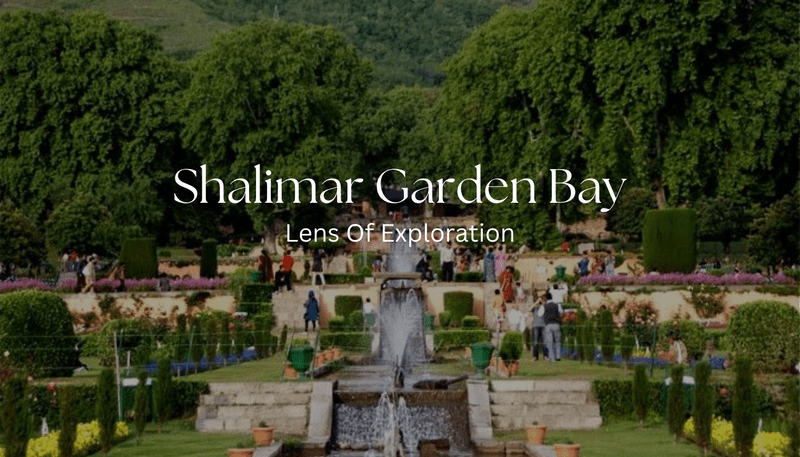

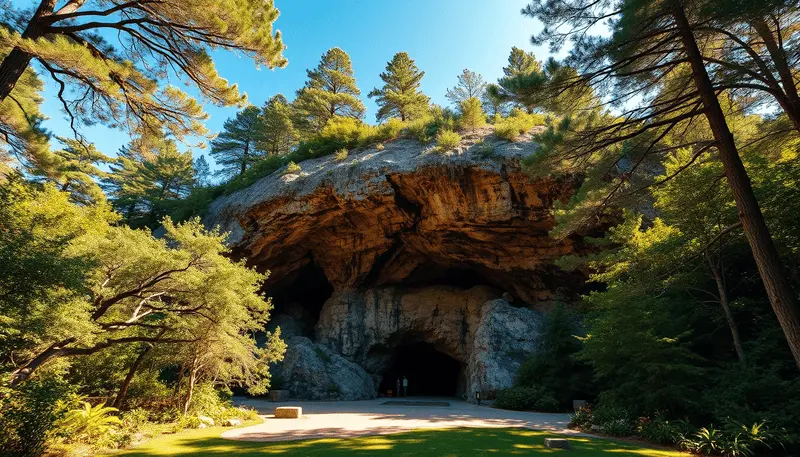
Choose Kawartha Lakes Airport Limo and Shuttle Service for professional, timely transfers to Toronto Pearson, Billy Bishop, and Downtown Toronto. From affordable taxis to luxury limos and private shuttles, we provide convenient airport pick-up and drop-off services for any occasion.